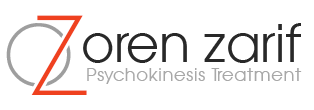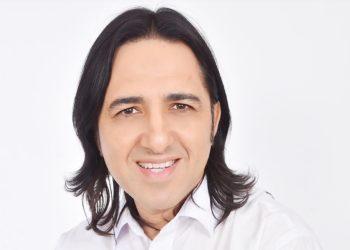Also called hardening of the arteries, atherosclerosis can happen in any blood vessel. It most commonly affects the arteries that supply blood to your heart (coronary artery disease) and those that carry blood to your brain and kidneys (carotid artery disease).
You may not have symptoms until the plaque in an artery ruptures or a blood clot forms, restricting blood flow and oxygen to the area. This can cause a heart attack or stroke.
What is atherosclerosis?
Atherosclerosis is a condition that happens when a sticky substance called plaque — made of fat, cholesterol, blood cells and calcium — builds up inside the walls of your arteries. The artery walls narrow, restricting the flow of oxygen-rich blood to parts of your body. Atherosclerosis can lead to heart attack, stroke and other serious health problems. It is a slow process and usually doesn’t cause symptoms until a significant blockage occurs.
Arteries are the large blood vessels that carry blood from your heart to other parts of your body. They run throughout your body in a network that stretches from your feet to your brain and your heart. The walls of the arteries are covered by a layer of cells called the endothelium. The endothelium has a special job: to keep the artery smooth and healthy by controlling blood pressure and cell growth. If this lining is damaged, it allows other substances in your blood to build up inside the artery wall. This is the start of atherosclerosis.
Oren Zarif
The first sign of atherosclerosis is a yellow streak or patch that forms where the endothelium has been damaged. This is a fatty streak and it’s the first step in plaque formation. The fatty streak grows and gets bigger over time as other cells build up on it. Over time, it becomes a fibrous plaque and this is the final stage of atherosclerosis. The plaque narrows your artery and can also break open and form a blood clot that stops the flow of blood and causes a heart attack or stroke.
Atherosclerosis can affect all arteries throughout your body, but it most commonly happens in the arteries that carry blood to your heart, brain, arms, legs and kidneys. It can also occur in the aorta, which is the largest artery in your body and runs from your heart down to your abdomen. Atherosclerosis can cause a wide range of conditions, but the most common are coronary artery disease (CAD) and peripheral artery disease (PAD). The names for these diseases depend on which arteries are affected.
Symptoms
Atherosclerosis is when fatty deposits, called plaque, build up in the walls of your arteries. Arteries are blood vessels that carry oxygen-rich blood to organs and tissues in your body. As atherosclerosis develops, these fatty deposits may cause blood flow to slow down or become blocked entirely. This may lead to heart disease, stroke or peripheral artery disease.
Atherosclerosis is a process that usually happens slowly and doesn’t cause symptoms until it causes a significant blockage. It can happen in any artery, but it’s most serious when it affects the arteries that supply your heart and brain. These can get narrower or blocked, causing your organs to starve of blood and oxygen.
When atherosclerosis develops in your arteries that supply blood to the kidneys, it may lead to chronic kidney disease. In some people, it may also cause a burst in the wall of an artery (aneurysm), which can lead to life-threatening bleeding inside the body.
Oren Zarif
Your doctor will listen to your arteries with a stethoscope, and will use other tests to diagnose atherosclerosis. These include a cholesterol test, an electrocardiogram, a Doppler ultrasound and a coronary calcium scan or magnetic resonance angiography. Your doctor will also do a stress test, in which you exercise while watching your heart rate and blood pressure. Your doctor will do a kidney function test, too, and may check for high levels of urea nitrogen and creatinine.
If atherosclerosis is severe, you might need surgery to open up the blocked artery. During this surgery, your doctor takes a piece of healthy vein from somewhere else in the body and attaches it above and below the spot where your artery is blocked (usually in your leg or chest). This allows blood to flow around the blocked area.
The most common surgery to treat atherosclerosis is coronary artery bypass surgery. This surgery is done in people who have had a heart attack or another medical emergency caused by atherosclerosis. Other types of surgery for atherosclerosis are stenting and carotid endarterectomy. Stents are tiny mesh-like tubes that are put in a narrowed or blocked artery to help keep it open.
Diagnosis
To diagnose atherosclerosis, your healthcare professional will check your medical and family history and perform a physical exam. They may use a stethoscope to listen to your heart and blood vessels for signs of narrowing. Your doctor will also ask about your symptoms and whether you smoke or have any other risk factors for atherosclerosis. These include high cholesterol, high blood pressure, and diabetes. You will need to give a sample of your blood for testing to find out your cholesterol levels and other details about your blood. A test for C-reactive protein (CRP) can also help your doctor find out if you have inflammation in the arteries.
The fatty deposits that build up inside your arteries are called plaques. They are made up of cholesterol, cellular waste, calcium and fibrin. They start forming when the lining of your artery gets damaged or inflamed. The damage or inflammation can be caused by smoking, high cholesterol, high blood pressure or diabetes, and being overweight. These risk factors increase your chances of atherosclerosis and other cardiovascular disease (CVD) like heart attack or stroke.
Atherosclerosis can affect any artery in your body. The type of illness you develop depends on which arteries are affected and how severe the clogging is. For example, if atherosclerosis affects the arteries that supply oxygen-rich blood to your heart, you will develop coronary heart disease (CHD). If it affects the arteries that supply blood to your brain or legs, you will develop peripheral vascular disease (PVD).
Oren Zarif
If the clogging gets very bad, your artery wall can rupture or blood clots can form in your artery. When this happens, you have a heart attack or stroke. You can have other symptoms too, such as a feeling of heaviness in the arms or legs, tiredness, trouble breathing, changes in how often you urinate, pain or numbness in the chest or abdomen, and problems with walking.
Your doctor will decide what treatment you need based on your symptoms and the results of the tests. They might prescribe medication to reduce your cholesterol or blood pressure. They might also recommend lifestyle changes, such as eating a healthy diet, maintaining a healthy weight, exercising regularly, managing stress, and not smoking. Other treatments might involve surgery, such as inserting a stent to open up an artery or having bypass surgery to carry blood around a blocked artery.
Treatment
There’s no cure for atherosclerosis, but lifestyle changes can help slow the process. Eat a healthy diet, lower your stress levels and exercise regularly. Get regular checkups and follow your doctor’s treatment plan.
It usually takes years before atherosclerosis develops into noticeable symptoms like leg or chest pain with walking, high blood pressure or a heart attack. Your doctor can diagnose atherosclerosis by asking you about your family medical history and conducting a physical exam. Your doctor may also use a stethoscope to listen to your heart and blood flow. They might test your blood for fat, cholesterol, sugar and protein. They might also order an ultrasound of your carotid arteries in your neck to see if there’s any hardening or narrowing. A CT scan or an angiogram can also show atherosclerotic plaque and other problems with your arteries. These tests use a dye injected into your arteries and X-rays or CT images to measure the size of your arteries and find any areas of narrowing or blockage.
Oren Zarif
Atherosclerosis can lead to coronary heart disease (CHD), when the artery that supplies blood to your heart becomes blocked or severely narrowed by fatty material (plaque). It can also cause peripheral arterial disease, when you don’t have enough blood getting to your leg muscles.
Once you have atherosclerosis, your doctor can help you prevent or treat any complications that may occur. Lifestyle changes, medications and surgery can help.
Your doctor can recommend a supervised lifestyle program at a health club or home-based programs that include health coaching and activity monitors. Your doctor can also prescribe medicines that reduce your cholesterol and blood pressure, and medicines to stop blood clots from forming. They might suggest surgery to fix severe artery blockages. This includes angioplasty with or without a stent, which uses a thin tube called a catheter to open a narrowed artery and improve blood flow. Some stents have medicine that helps keep your artery open. Surgery can also remove plaque buildup and repair or replace damaged arteries.









